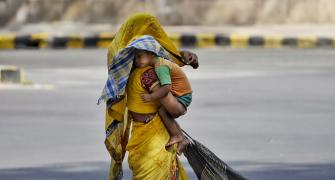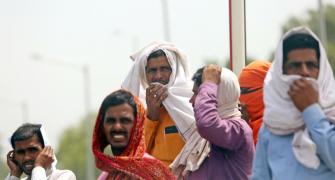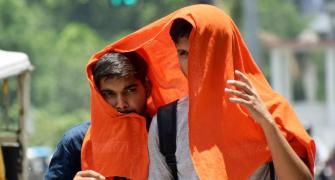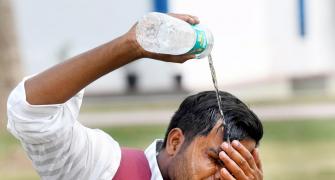States have been told to prepare in advance to counter any impact of an adverse southwest monsoon.
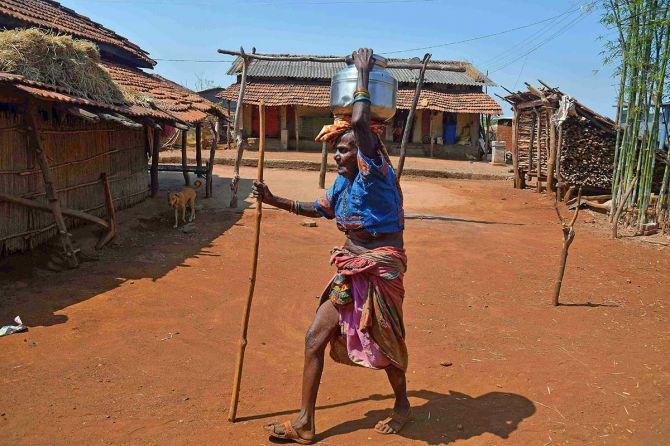
Seven years ago, cumulative rainfall across India during the June-September southwest monsoon season dropped below 90 per cent of the Long Period Average (LPA), to 87.3 per cent.
Thus, 2015 was officially classified as a 'deficient' monsoon year.
Since then, there has been no deficient rainfall year. In fact, the past four years --2019, 2020, 2021, and 2022 -- were rainfall-surplus years.
However, 2023 could turn out to be different as, after a gap of four years, the dreaded El Niño phenomenon is expected to mark its presence.

Though, the IMD in its second forecast has maintained that monsoon in 2023 will be 'normal' at 96 per cent of the LPA. The forecast is with a model error of plus and minus four percent.
The met said spatial distribution of the rains is also expected to be normal with only North-West India likely to get 'below-normal' rains. The probability of normal rains as per the met has also improved between its April and May forecasts.
To what extent it will cause rainfall deficiency and disturb rain patterns is a matter of conjecture at this point. The coming days will provide the answers.
Being a large country, in any given year, nearly 15-20 per cent of India’s landmass does not have adequate monsoon rainfall.
Nonetheless, as around 56 per cent of the net cultivable area of the country is rainfed, accounting for 44 per cent of total food grain production, southwest monsoon rainfall is critical for agriculture and food security.
The June-September showers account for around 73 per cent of the annual precipitation that India receives.

Careful monitoring of the symptoms of drought and early warning are key to effective management of the drought, according to policymakers.
"El Niño events pose a distinct threat to Indian agriculture, often altering monsoon patterns and leading to drought and unpredictable crop output," Tejashree Joshi, head, environmental sustainability, Godrej & Boyce, tells Business Standard.
"It's crucial that agricultural communities turn towards sustainable and adaptive farming methods. This includes diversifying crop types for resilience, investing in water-efficient irrigation systems to handle erratic rainfall, and enhancing the use of weather prediction technology for better preparedness," Joshi adds.

Types of drought
Droughts are classified into three distinct types -- meteorological, hydrological, and agricultural.
Meteorological drought is based on rainfall deficiency.
Hydrological drought is deficiencies in surface and sub-surface water supplies leading to lack of water for normal and specific needs.
Such conditions arise even in times of average (or above average) precipitation when increased water usage diminishes the reserves.
And finally, agricultural drought is identified by four consecutive weeks of meteorological drought. Generally, rainfed agriculture areas are more prone to this.

Drought or deficient rainfall?
One big change in India's drought management is in the IMD's parlance.
Back in 2016, after the last significantly low-rainfall scenario in the country, the State-run IMD decided to drop the term 'drought' from its official terminology.
Officials said an order to this effect was circulated across all offices of the IMD, also to be followed in all internal communications.
The met department earlier used to classify a year as a drought year whenever rainfall deficiency was more than 10 per cent and when 20-40 per cent of the country was under drought conditions.
The official term for this was 'All India drought year'.
Similarly, an 'All India severe drought year' was classified when rainfall deficiency was more than 10 per cent and the spatial coverage of drought exceeded 40 per cent.

Drought management
State governments are primarily responsible for managing and undertaking necessary relief measures in the wake of natural calamities, including drought, hailstorms, and pest attacks.
The Government of India supplements the efforts of state governments with financial assistance.
In the eventuality of notified calamities, state governments are empowered to take up relief measures from the readily available State Disaster Response Fund (SDRF).
For a severe calamity, additional financial assistance over and above SDRF is sought from the National Disaster Response Fund (NDRF), in accordance with items and norms of assistance, after receiving a memorandum from the state government concerned.
A Manual for Drought Management was published in 2009 by the central government.
To promote the use of modern technology, the manual was revised and updated in December 2016 through a consultative process, involving the central ministries concerned, state governments, and scientific, technical and research organisations.
That apart, the National Agricultural Drought Assessment and Monitoring System (NADAMS), developed by the National Remote Sensing Centre, provides near real-time information on the prevalence, severity level, and persistence of agricultural drought at the state/district/sub-district levels.

Who declares drought?
In India, states first monitor monsoon data on various critical parameters during the season. If the actual rainfall falls short of set parameters, the state notifies drought and submits a memorandum to the central government.
Thereafter, an inter-ministerial central team (IMCT) visits the state to assess the drought situation and recommend financial assistance.
The IMCT sends a report to the Sub-Committee of the National Executive Committee (SC-NEC), headed by the home secretary.
The SC-NEC's recommendations are placed before the high-level committee (HLC), chaired by the home minister.
The HLC takes the final decision on the quantum of assistance based on the IMCT's report, SC-NEC recommendations and the items and norms of assistance.
In the central government, the Crisis Management Group on Drought, headed by the central drought relief commissioner, reviews the drought situation with representatives of ministries/departments and other stakeholders, as and when required.
There is also a Crisis Management Plan for drought that focuses on interventions required during crises.
It delineates the roles and responsibilities of various stakeholders, including central and state governments, and their agencies in managing a calamity.
The ministry of agriculture and farmers welfare through ICAR-Central Research Institute for Dryland Agriculture (CRIDA) has also formulated district agriculture contingency plans for 650 districts for implementing location-specific interventions to sustain agriculture production in the eventuality of any extreme climatic event.

On the anvil
To fine-tune its drought management capabilities, the agriculture ministry is launching a geospatial platform for monitoring, assessing, and declaring drought.
It will be a centralised platform for drought-related data, analytical tools, and products offering management knowledge and infrastructure, a whole-of-government approach with participation from multiple ministries, standardisation of data and maps of drought indicators, and a plug-and-play facility for developing geospatial solutions.
Besides, states have been told to prepare in advance to counter any impact of an adverse southwest monsoon.
Feature Presentation: Ashish Narsale/Rediff.com


